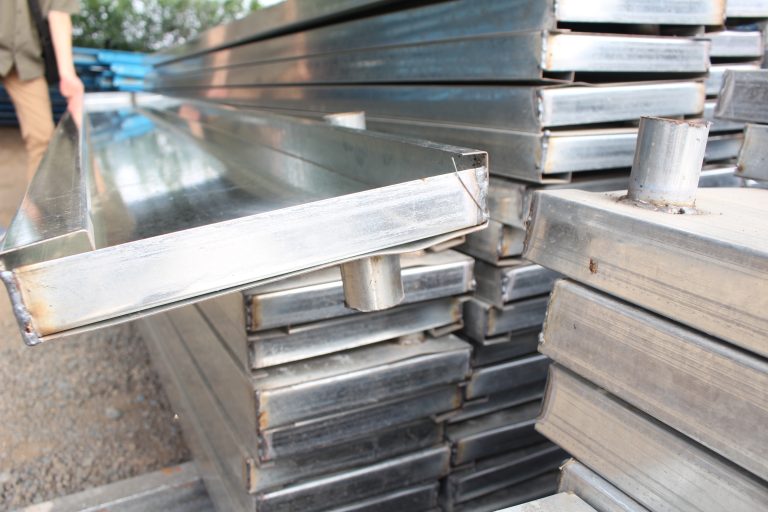Steel structure substation: an important facility for power distribution.
Table of Contents
Advantages of Steel Structure Substations in Power Distribution
Steel structure substations play a crucial role in the distribution of power across various regions. These facilities are essential for ensuring a reliable and efficient supply of electricity to homes, businesses, and industries. There are several advantages to using steel structures for substations, which make them a popular choice among power distribution companies.
One of the key advantages of steel structure substations is their durability and strength. Steel is a robust material that can withstand harsh weather conditions, such as strong winds, heavy rain, and snow. This makes steel structures ideal for substations located in areas prone to extreme weather events. Additionally, steel structures are resistant to corrosion, which helps prolong their lifespan and reduce maintenance costs over time.
Another advantage of steel structure substations is their versatility and flexibility in design. Steel can be easily fabricated into various shapes and sizes, allowing for customized solutions to meet specific project requirements. This flexibility in design also makes it easier to accommodate future expansions or modifications to the substation as needed. This adaptability is crucial for power distribution companies that need to adjust their infrastructure to meet changing demands and regulations.
Steel structure substations are also cost-effective compared to other building materials. Steel is a relatively affordable material that offers a high strength-to-weight ratio, which means less material is needed to achieve the same level of structural integrity as other materials. This can result in lower construction costs and faster project completion times, saving both time and money for power distribution companies.

In addition to their durability, versatility, and cost-effectiveness, steel structure substations are also environmentally friendly. Steel is a recyclable material that can be reused and repurposed at the end of its lifespan, reducing waste and minimizing the environmental impact of the substation. Furthermore, steel structures can be designed to be energy-efficient, with features such as natural ventilation and daylighting to reduce energy consumption and lower operating costs.
Overall, steel structure substations offer a range of advantages that make them an important facility for power distribution. Their durability, strength, versatility, cost-effectiveness, and environmental sustainability make them a popular choice among power distribution companies looking to build reliable and efficient infrastructure. By choosing steel structures for substations, power distribution companies can ensure a reliable supply of electricity to meet the needs of their customers now and in the future.
Key Design Considerations for Steel Structure Substations
Steel structure substations play a crucial role in the distribution of power across various regions. These facilities are essential for ensuring a reliable and efficient supply of electricity to homes, businesses, and industries. When designing a steel structure substation, there are several key considerations that must be taken into account to ensure its functionality, safety, and longevity.
One of the most important design considerations for a steel structure substation is the location. The substation must be strategically placed to minimize transmission losses and ensure optimal distribution of power. Factors such as accessibility, proximity to power sources, and environmental impact must be carefully evaluated when selecting a location for the substation.
Another critical consideration is the layout of the substation. The layout must be carefully planned to accommodate all necessary equipment and components, while also allowing for efficient operation and maintenance. The arrangement of transformers, switchgear, circuit breakers, and other equipment must be carefully coordinated to ensure proper functionality and safety.
In addition to the layout, the structural design of the substation is also a key consideration. The steel structure must be designed to withstand various environmental conditions, such as wind, snow, and seismic activity. The structural integrity of the substation is essential for ensuring the safety of personnel and equipment, as well as the reliability of the power distribution system.
Furthermore, the electrical design of the substation is another important consideration. The substation must be designed to handle the required voltage levels and power capacities, while also ensuring proper grounding and protection against electrical faults. The electrical design of the substation must be carefully coordinated with the structural design to ensure optimal performance and safety.
When designing a steel structure substation, it is also important to consider the environmental impact of the facility. Measures must be taken to minimize the impact of the substation on the surrounding environment, such as noise reduction, landscaping, and wildlife protection. Additionally, the substation must comply with all relevant environmental regulations and standards to ensure sustainable operation.
Safety is another critical consideration when designing a steel structure substation. The substation must be designed to minimize the risk of electrical hazards, fires, and other safety incidents. Adequate safety measures, such as fencing, signage, and emergency response plans, must be implemented to protect personnel and equipment.
Overall, designing a steel structure substation requires careful consideration of various factors, including location, layout, structural design, electrical design, environmental impact, and safety. By addressing these key considerations, engineers can ensure the functionality, safety, and longevity of the substation, ultimately contributing to a reliable and efficient power distribution system.







